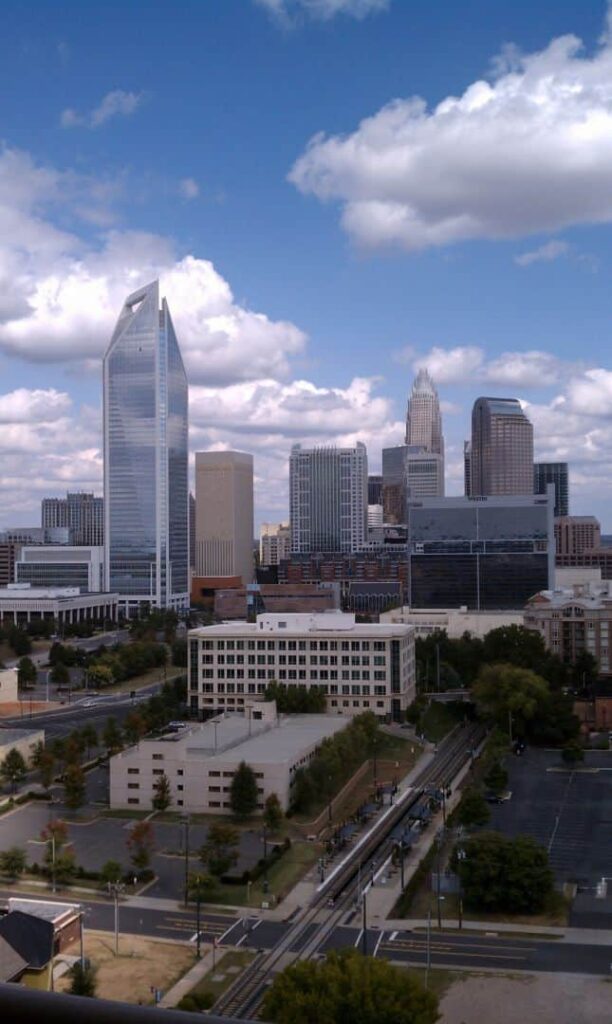Discover Charlotte | Uptown Charlotte, Part II
 Discover Charlotte by spending some time exploring the possibilities of living in Charlotte NC, either alone or with the help of a real estate agent. Maps and descriptions in the ‘Neighborhood‘ tab on our website will acquaint you with the different area of the Charlotte Metro Region, including areas within the Charlotte city limits, other towns outside of Charlotte as well as the surrounding counties.
Discover Charlotte by spending some time exploring the possibilities of living in Charlotte NC, either alone or with the help of a real estate agent. Maps and descriptions in the ‘Neighborhood‘ tab on our website will acquaint you with the different area of the Charlotte Metro Region, including areas within the Charlotte city limits, other towns outside of Charlotte as well as the surrounding counties.
Whether you plan to rent or own, live among the bustling urban scene or quiet tree-lined streets or whether you’re shopping for an apartment, condo, townhome, loft, single-family home or a lot on which to build your dream home, you’ll find what you want in Charlotte.
In today’s trending buyers’ market, you are almost assured of finding your dream home at a reasonable price–at least a more reasonable price than in years past. One of Charlotte Metro’s trendiest residential areas is Uptown. Formerly called Downtown Charlotte, the Queen City’s political leaders opted to change the name to Uptown to reflect the upscale, upbeat vibrant new vertical community that was transforming right before our very eyes in the late 90’s. With glitzy high-rise condominiums, rehabbed historic lofts, a few new single family homes, townhomes and elegant historic Victorian homes, all within blocks of each other, Charlotte’s Uptown took on a new life, like no other metropolitan area in the country!
Currently approximately 13,000 people reside within the I-277 Uptown loop and it is projected that by 2028, approximately 100,000 people will reside in Charlotte’s Uptown area. Uptown Charlotte, originally divided into four districts, or Wards, with Trade and Tryon Streets serving as the inner boundaries, continues to be referred to by Charlotteans using the distinctly different Wards as ‘First, Second, Third and Fourth’ Ward. Use of the term Ward to identify Uptown areas may be used to designate the community but, collectively these area mesh so well that to a newcomer, it is impossible to determine the boundaries of each.
- First Ward is the home to the Charlotte Bobcats’ Time Warner Cable Arena, ImaginOn, several museums, office buildings, restaurants and a vibrant night life. Residential options include apartments, condos and even a few single-family homes. Charlotte’s popular LYNX Blue Line (light rail) originates at 7th Street in First Ward and is a popular means of transportation for residents and visitors of Charlotte’s South End and as far south as the Pineville area (at I-485 and South Boulevard).
- Second Ward, home to the city government offices, is also becoming an upscale residential area. The luxurious Ratcliffe on the Green condominiums includes an interactive park with fountains and walkways. with few residential complexes including some of the most upscale in the city. Other upscale residential developments include The Trust, The Madison and the new Skye Condominiums. The EpiCentre offers a vibrant nightlife destination for both residents of Uptown, visitors to the area and Charlotte proper residents, and includes several clubs and lounges, a movie theater, a bowling alley, restaurants and retail, as well as condos which are still under construction.
- Third Ward, the last to be revitalized, has experienced a resurgence in part due to its proximity to Bank of America Stadium (home of the Carolina Panthers) and the development of the Gateway offices, shops, restaurants and condos. The Levine Cultural Campus at South Tryon and 1st Street includes the Knight Theater, Mint Museum and the Harvey B. Gantt Center for African-American Arts+Culture. As well, Johnson & Wales University revolutionized Third Ward with the opening of its doors in 2004.
- Fourth Ward, the first to begin revitalization in the 1970’s, includes homes, condo, townhomes and apartments, all in a Victorian atmosphere and within walking distance of the cultural district and office towers. Quaint restaurants, a few upscale bars and drug store, auto repair shop and even a grocer call Fourth Ward home, offering Fourth Ward (and all other Uptown residents) the convenience of leaving the car behind unless traveling beyond the Uptown area.
